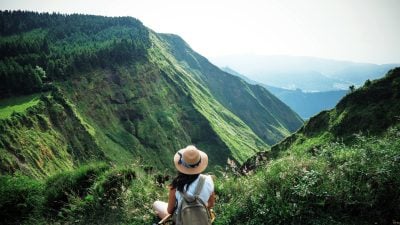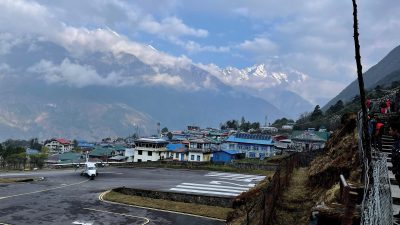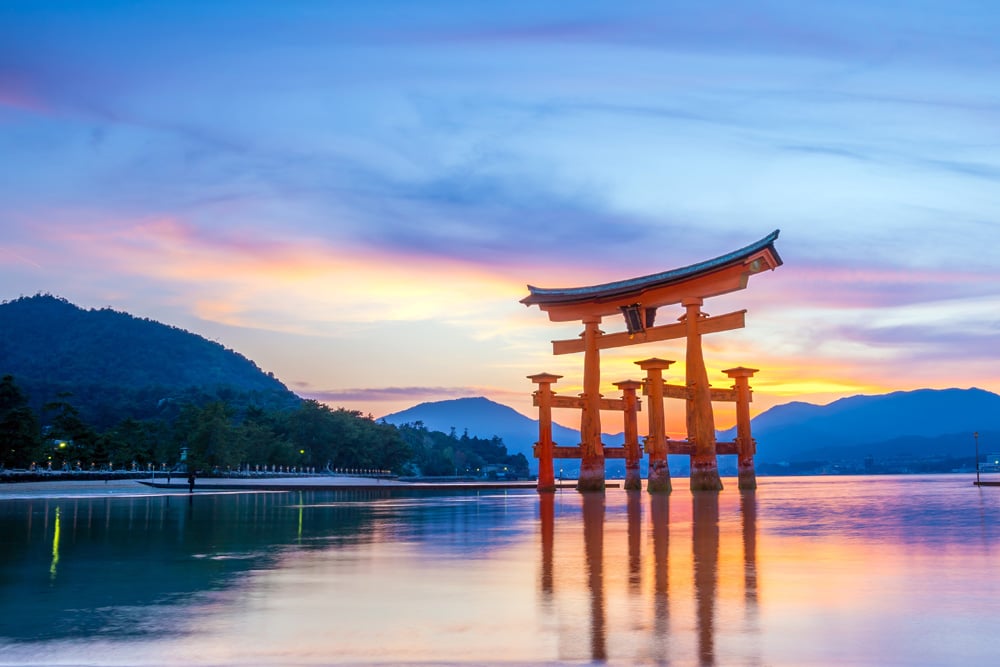
The Perfect Two-Week Japan Vacation
Enjoy the many contrasts and surprises to be experienced in the “Land of the Rising Sun,” on a Japan vacation.
Like visits to all countries, it is a question of what to see and do to not only enjoy a visit but to experience the highlights and to really get to know the destination when time is limited. This article on suggestions for a Japan trip is aimed at culture lovers and first-time visitors to this intriguing country.
Tokyo
Of course, you must begin your trip to Japan in the capital, Tokyo. Because of its size, it can be daunting to tackle. However, many of the signs are in English, including on the subway system. With a major earthquake in 1923 and the effect of bombing received during the Second World War, a large number of the city’s buildings are modern and contemporary, but there are a number of traditional areas which remain from the old traditional Tokyo. Although there are extremely busy districts, there are many pockets of serenity in the centre of the city which are mentioned below. Some of the many highlights to be visited on a Japan vacation should include the following.
The Imperial Palace
This is the home of the Emperor and Empress of Japan. It has always surprised me that this outstanding palace is situated in the very heart of the city. This is one of the pockets of serenity and an oasis of tranquility in the midst of the hustle and bustle of Tokyo. The castle-like building is surrounded by moats, tree-filled gardens, and impressive stone walls. Unfortunately, you can only visit the inner palace grounds two days a year. However, the attractive Imperial Palace East Garden and Outer Garden which are a part of the palace area are open to the public. The large plaza in front of the Imperial Palace is where visitors can view the Nijubashi – two bridges that form an entrance to the inner palace grounds. Watch out for runners who continually run around the perimeter of the palace grounds!
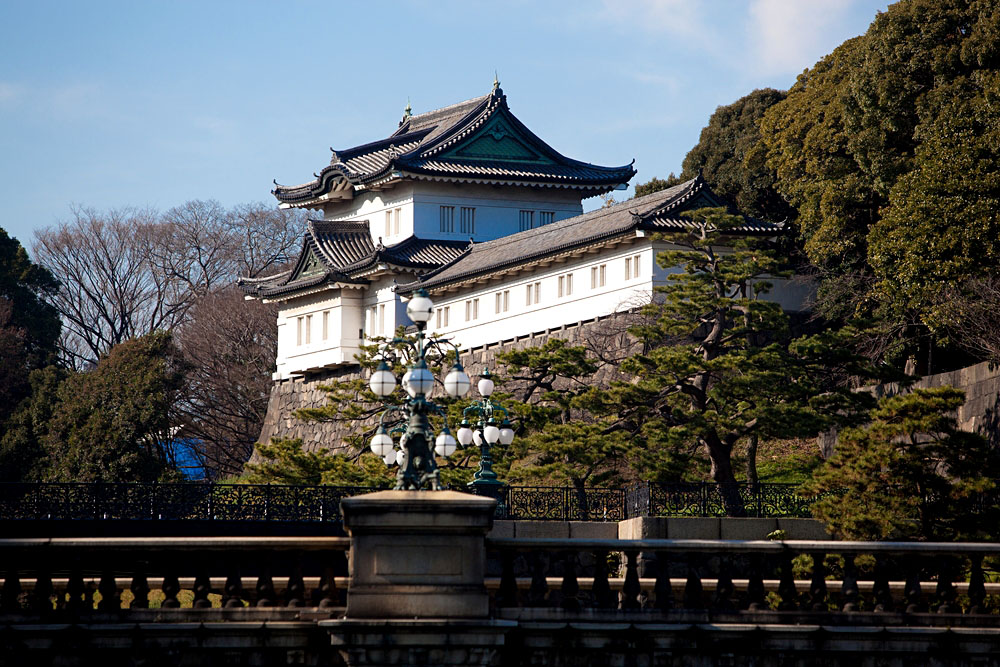
See Tokyo from the Top of the City
There are 3 buildings from the top of which you can have a panoramic bird’s-eye view of Tokyo. These include the Tokyo Tower, the world’s tallest self-supported steel tower. Due to the tower’s central location, the observation platform offers an amazing view of the city and one can, when visibility allows, see Mount Fuji in the distance. The Tokyo Metropolitan Government Building has observation decks which are free of charge and which provide excellent panoramic views of Tokyo and beyond. The Tokyo Skytree is a television broadcasting tower and a landmark in Tokyo. It is the tallest building in Japan and was the second tallest structure in the world at the time of its completion. Again, with favourable conditions, famous landmarks such as Mount Fuji can be seen from the observation platforms.
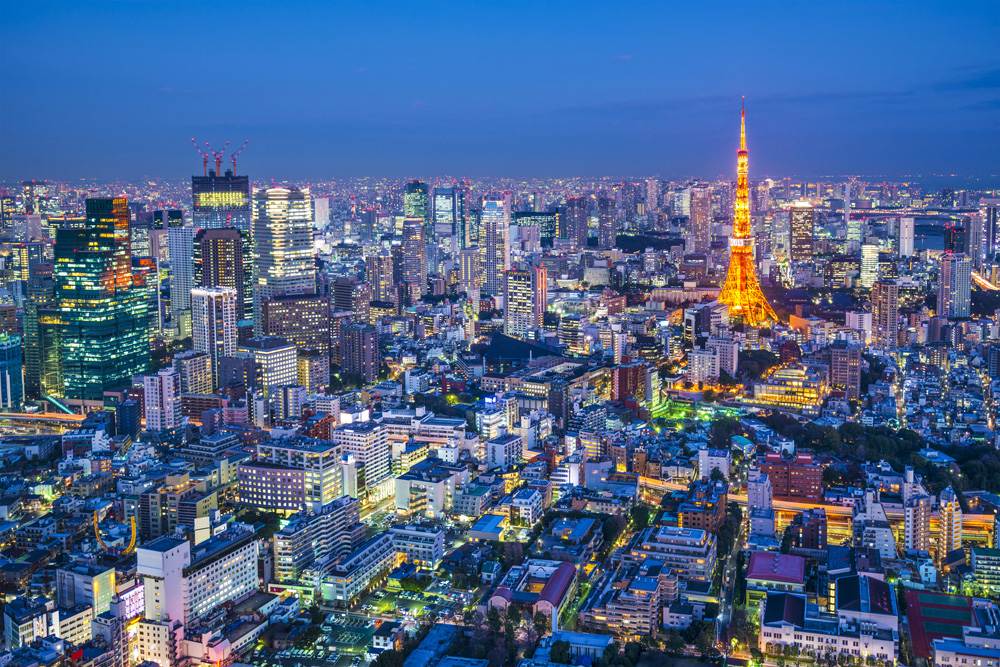
Ueno Park
Another pocket of serenity is Ueno Park. This is the place to visit on Japan tours if you are a museum buff. The park houses a number of the most important museums and art galleries in the city. They include the Tokyo National Museum, which features a large collection of national cultural treasures of around 100,000 objects from early Japanese times to the present day, such as Buddhist statues, calligraphy, tea ceremony art, swords, armour, and pottery. The National Science Museum houses fascinating exhibits including some on space exploration. The National Museum of Western Art houses an extensive collection of Western art, and the Tokyo Metropolitan Art Museum has a collection of works spread over many periods. Another small cultural gem is the Shitamachi Museum which provides a look at Japan in the early 20th century, with re-created houses and stores and cultural artefacts. All this, plus Ueno has a zoo containing more than 300 animals.

The Asakusa District
Asakusa is Tokyo’s old traditional district. It was once Tokyo’s largest pleasure district filled with gangsters, geisha, courtesans, writers, artists, actors, and beggars. The main attraction today in this colourful neighbourhood is the Sensoji Buddhist Temple, also known as the Asakusa Kannon Temple. It was originally built in the 7th century AD and is Tokyo’s oldest and most visited active temple. From the temple, you can explore the neighbourhood, especially the shopping street called Nakamise. This is a street market with many stalls selling everything from snacks to typical Japanese souvenirs. There are also boutique-style shops in this area which sell more upscale merchandise.
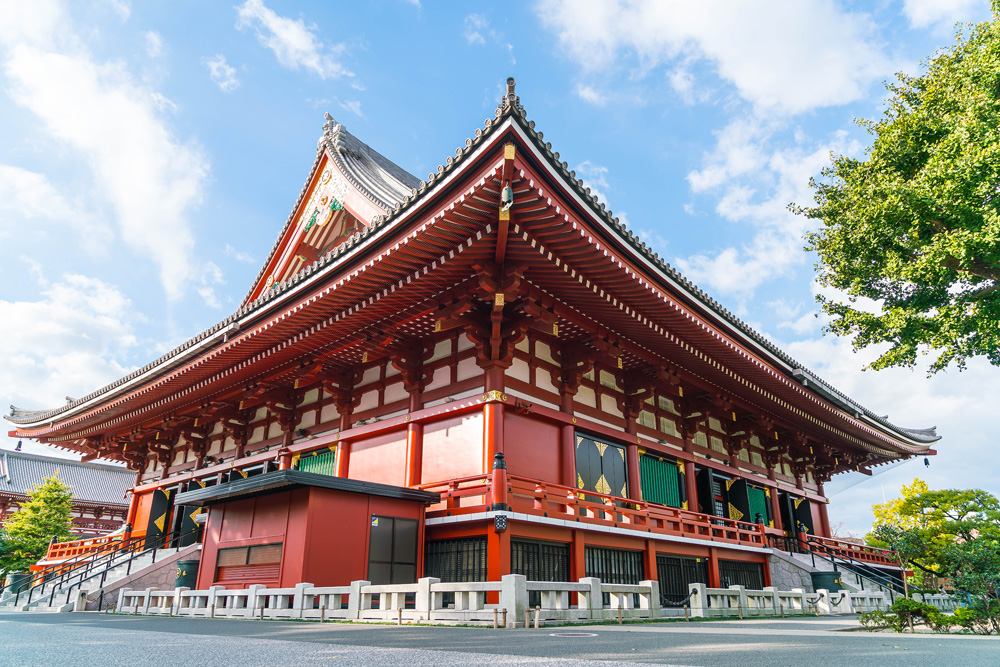
Tsukiji Outer Fish Market
This may not be everyone’s cup of tea on Japan tours, but is a popular tourist attraction and a recommended site. The outer fish market consists of a number of small retail shops and restaurants situated in narrow lanes. Here you will find all kinds of food-related goods, fresh seafood, and other produce for sale.
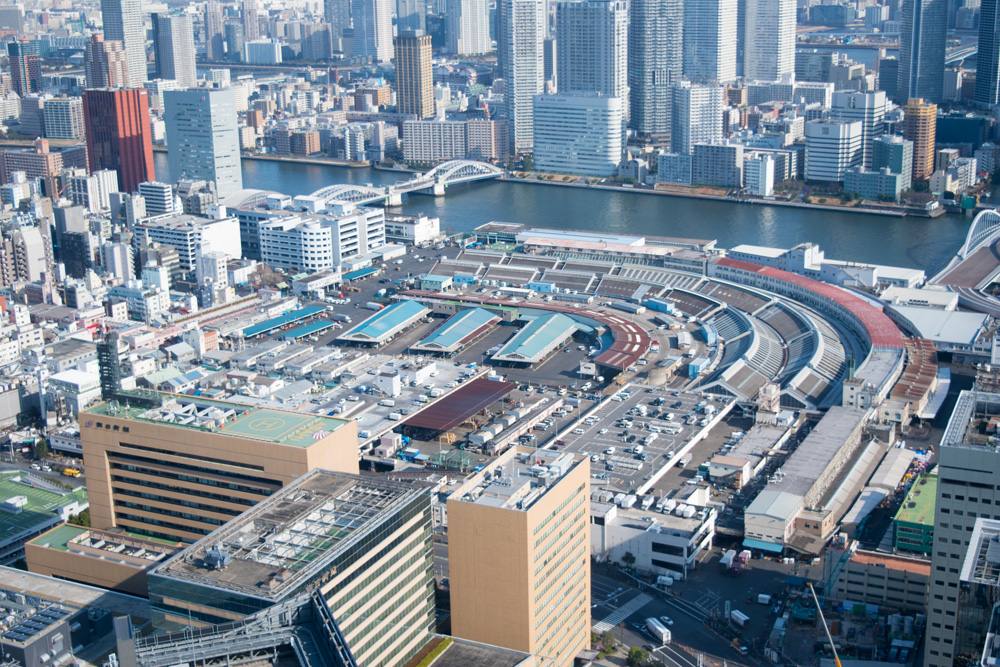
Meiji Shrine
The renowned and popular Meiji Shrine was built in 1920 and dedicated to the first modern Emperor and Empress of Japan at that time. Next to it is a spacious park and gladed forest with attractive paths along which to stroll. It’s an oasis in the middle of this vast city. You can, if you wish, take part in typical Shinto, such as making offerings in the main hall or writing a wish on an ema (a small plaque) which you subsequently hang up in the shrine. You may be fortunate to see a traditional wedding ceremony take place on the grounds of the shrine as I did. The whole wedding party is often dressed in traditional costumes. These ceremonies are a regular occurrence.

Nikko
Nikko is a historical city located 140 kilometres/87 miles north of Tokyo and well worth a visit. The attractions on a Japanese vacation here are many and include mountain scenery, lakes, waterfalls, and hot springs. However, the main attractions are some of the historic structures. These include the mausoleum of shogun, Tokugawa Ieyasu, who ruled Japan in the 16th century. The Toshogu Shrine is a highly decorated shrine complex consisting of more than a dozen buildings set in a beautiful forest. Countless wood carvings and large amounts of gold leaf were used to decorate the buildings. The Rinnoji Temple is Nikko’s most important temple. It was founded by a Buddhist monk who introduced Buddhism to Nikko in the 8th century. The main building houses large, gold-lacquered, wooden statues. The Kirifuri Waterfall is an impressive waterfall located just outside of Nikko. The fall colours in the area are wonderful from late October to early November.
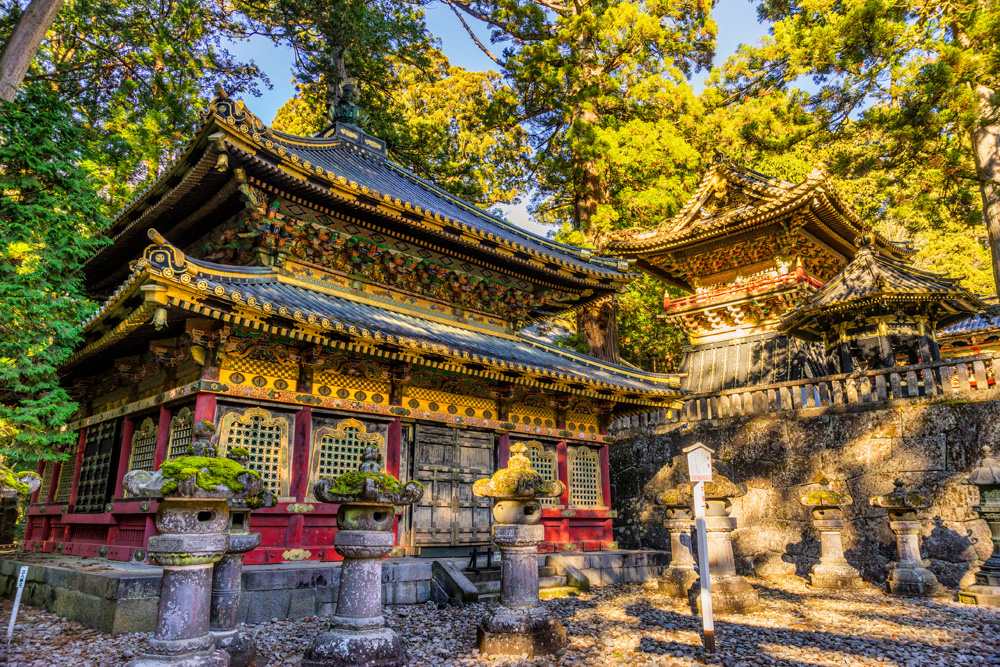
Hakone

Moving on from Tokyo, you should head south to the very attractive scenic district of Hakone. If travelling on the bullet train, you will pass right underneath perpetually snow-capped Mount Fuji.
Hakone is set amid beautiful mountains and is a national park. It is known for its hot spring resorts and Mt. Fuji views. Attractions are Lake Ashi, which can be toured by boat, the boiling sulphur springs of Owakudani Valley, the Hakone Ropeway cable car, and Hakone Open Air Museum, with its displays of a wide variety of sculptures and artwork within a beautiful parkland setting. Hakone offers a cable car ride up to Mt Komagatake, the best site for providing magnificent views of Mount Fiji and Lake Ashi. As well, Hakone offers various boat cruises along Lake Ashi and hikes through natural surroundings. A stay at a ryokan (a traditional Japanese inn) is highly recommended here.
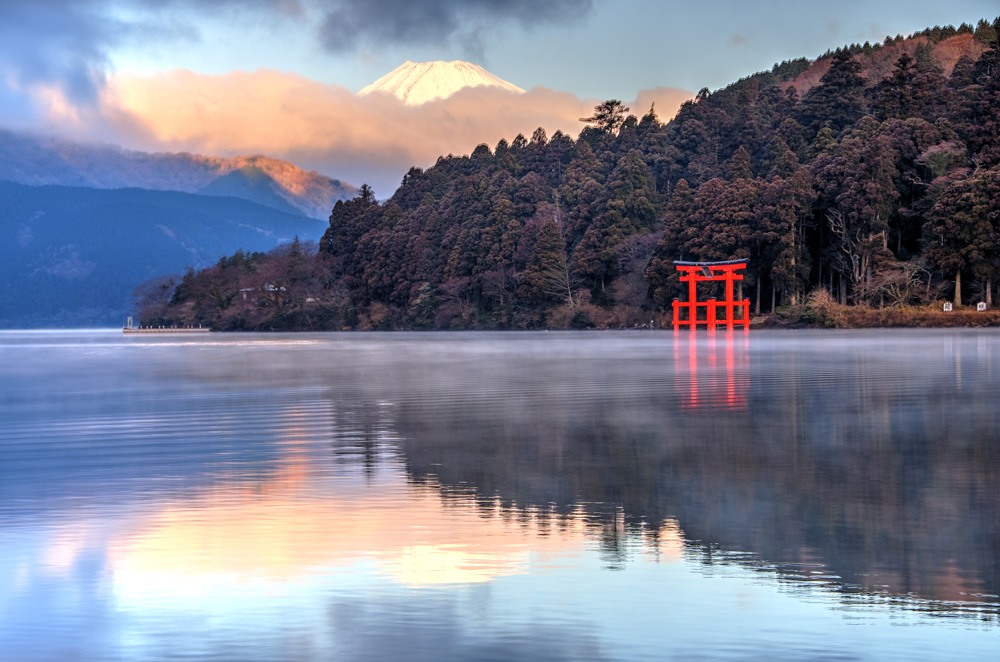
Kyoto
Travelling south again, if there is one city that epitomizes traditional Japan, it is Kyoto, the former capital of Japan. Somehow, this is a modern working city which has been built around numerous historical buildings and sites which are strung around the town. This is the place to see Geisha girls simply walking through the streets of the old Gion district. You may not be able to visit all the historical buildings in a few days here while on a Japan vacation – as there are so many – but at least try the following.
Imperial Palace
The Kyoto Imperial Palace used to be the residence of Japan’s Imperial Family until 1868. It is located in Kyoto Imperial Park, an attractive park in the centre of the city. The palace complex is enclosed by long walls and consists of several gates, halls, and gardens. The current Imperial Palace was reconstructed in 1855 after it was burnt down. The palace grounds can be entered without any prior arrangements (although tours in English are available). None of the buildings can be entered. There are other historical sites within the Kyoto Imperial Park. These include the Kaninnomiya Mansion, a former residence of court nobles, and the famous Itsukushima Shrine, situated on a small island in a pond.

Nijo Castle
Nijo Castle was built in 1603 as the residence of the first shogun of the Edo Period (1603-1867). Its palace buildings are arguably the best surviving examples of castle palace architecture from Japan’s feudal era. The entire castle grounds are surrounded by stone walls and moats and can be divided into three areas, the Honmaru (main circle of defence), the Ninomaru (secondary circle of defence which served as the residence and office of the shogun during his visits to Kyoto), and gardens that encircle the Honmaru and Ninomaru.
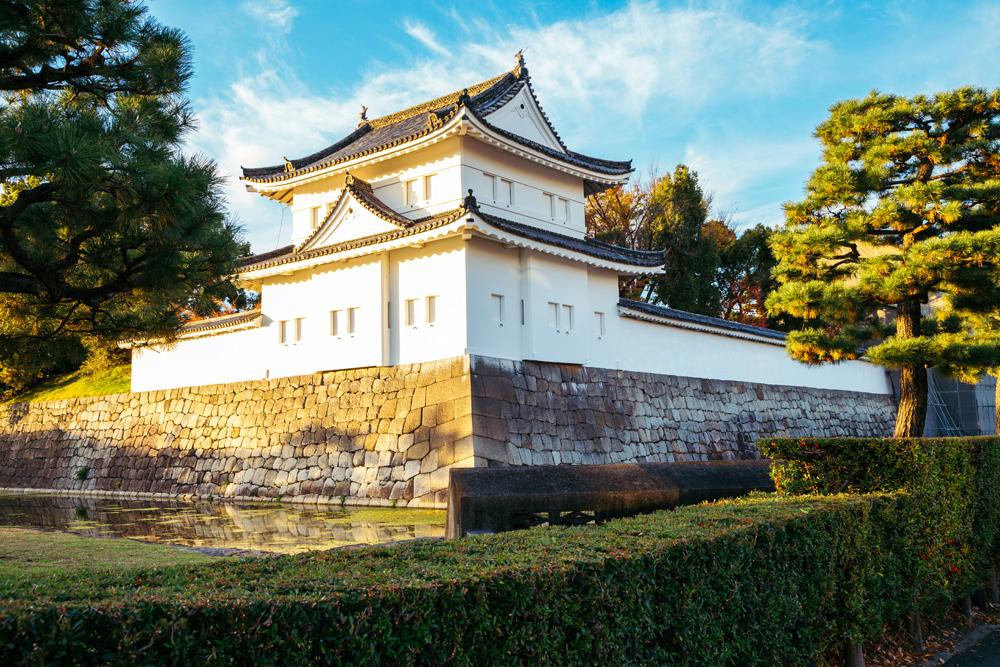
Kinkakuji and Ginkakuji Pavillions
Kinkakuji, the Golden Pavilion, is a Zen temple whose top two floors are completely covered in gold leaf. It is an impressive structure built overlooking a large pond that reflects a mirror image of itself. The gardens offer a few places of interest including a pond that is said to never dry up and statues that people throw coins at for luck. Ginkakuji, the Silver Pavilion, is also a Zen temple. In 1482, shogun Ashikaga Yoshimasa built his retirement villa on the grounds of today’s temple. The villa was converted into a Zen temple after his death. You can walk on the grounds along a circular route from which the gardens and buildings can be viewed.
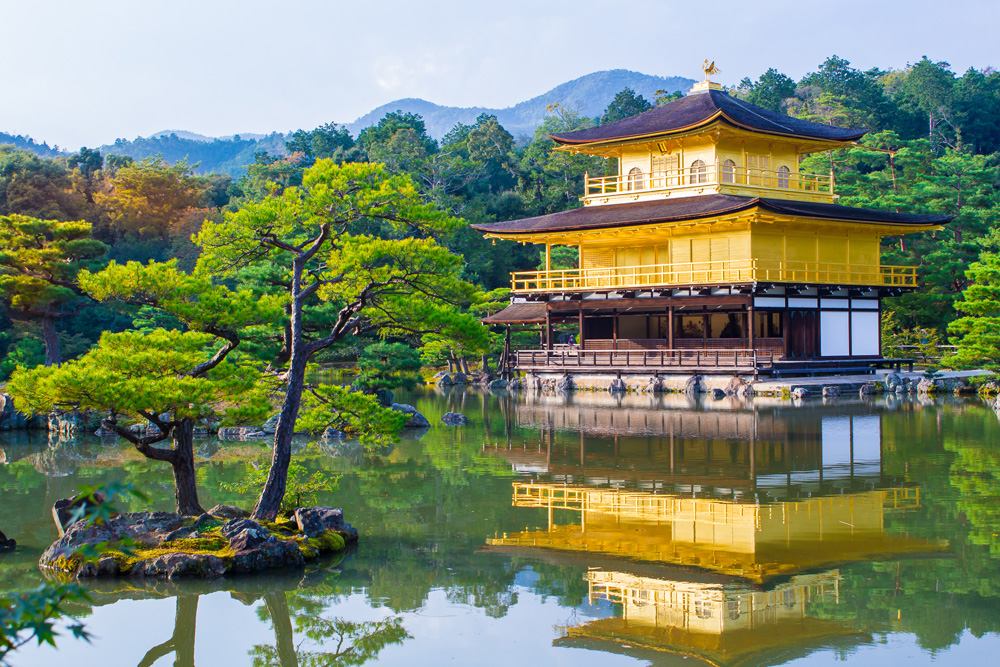
The Heian Shrine
The Heian Shrine dates back just over a hundred years and was built on the occasion of the 1100th anniversary of the capital’s foundation in Kyoto, dedicated to the spirits of the first and last emperors who reigned in the city. The shrine grounds are very spacious and the main buildings are a partial replica of the original Imperial Palace. The garden’s most striking feature is its many weeping cherry trees, making the garden one of the best places to see cherry blossoms in Kyoto. Occasionally, the shrine’s court is used for special events such as the Jidai Festival, which is held each year on October 22, the anniversary of the foundation of Kyoto. The festival’s main event is a parade of people in costumes from different periods of Japanese history that leads from the Kyoto Imperial Palace to the Heian Shrine.
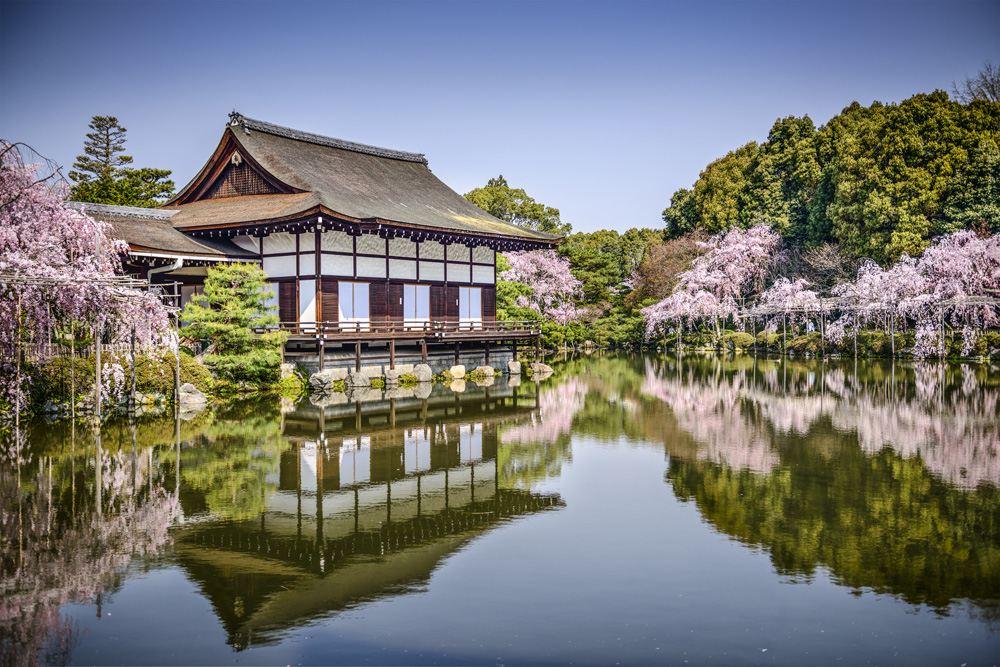
Nara
Less than an hour away from Kyoto is Nara, Japan’s first permanent capital established in the year 710 AD. It is full of historic treasures including some of Japan’s oldest and largest temples. Todaiji (Great Eastern Temple) is one of Japan’s most famous and historically significant temples constructed in 752 AD as the head temple of all Buddhist temples of Japan. Todaiji’s main hall is the world’s largest wooden building. This huge building houses one of Japan’s largest bronze statues of Buddha, standing 15 metres/49 feet tall. Horyuji Temple is one of the country’s oldest temples and contains the world’s oldest surviving wooden structures. The temple grounds are spacious and separated into two main precincts. Nara Park is a large park and home to hundreds of freely roaming deer. These deer have become a symbol of the city and have been designated as a natural treasure. Nara’s deer are surprisingly tame.
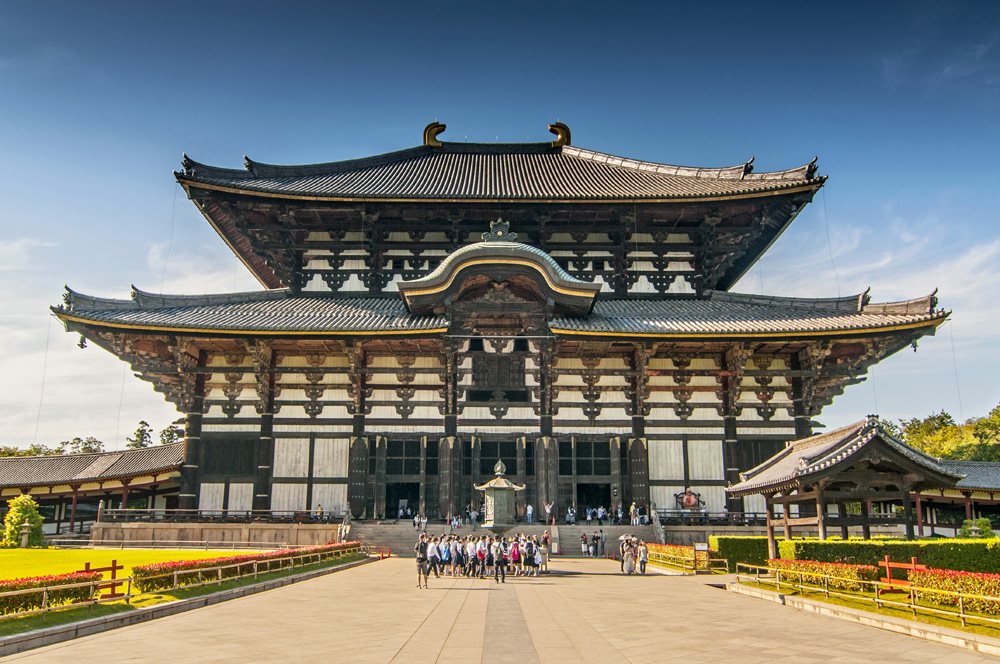
Hiroshima
Continuing south on a Japan vacation, you arrive at the very symbolic city of Hiroshima, one of the two which were the victims of an atomic bomb during World War II.
Hiroshima is known for when the first atomic bomb was dropped on the city in 1945. It obliterated nearly everything. It was declared the City of Peace in 1969 by the Japanese parliament. Great effort was taken to rebuild the city including destroyed monuments of Hiroshima’s historical heritage such as Hiroshima Castle and Shukkeien Garden. In the centre of the city, a large park was built and given a name that would reflect the aspirations of the re-born city: Peace Memorial Park. A visit here on a trip to Japan will be rewarding. One of Peace Memorial Park’s features is the Atomic Bomb Dome. With only the partially-standing structure and skeletal ruins left after the bomb attack, this domed building is now listed as a UNESCO World Heritage site.
Another UNESCO World Heritage Site is Itsukushima Shrine, located in Miyajima Islands. When you look at a photo of it, you will find it perhaps familiar, as it is one of the most photographed sites in Japan after Mount Fuji.
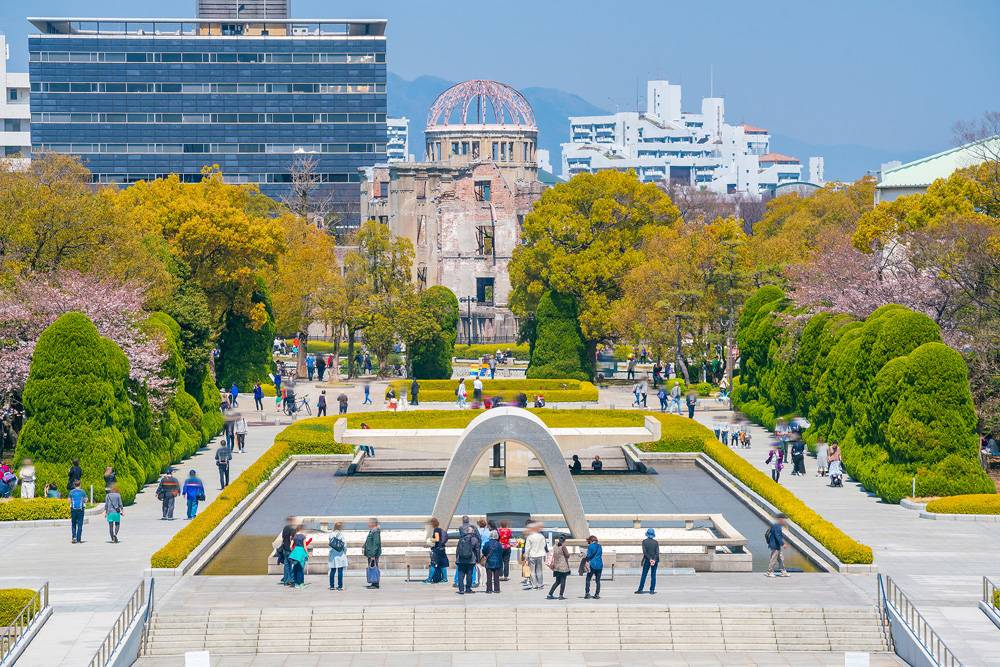
Get more travel inspiration by email.
Subscribe
0 Comments

Get the latest travel trends & hear about the best deals on vacations around the world.
If you’re a Globetrotter, these are the newsletters for you!
